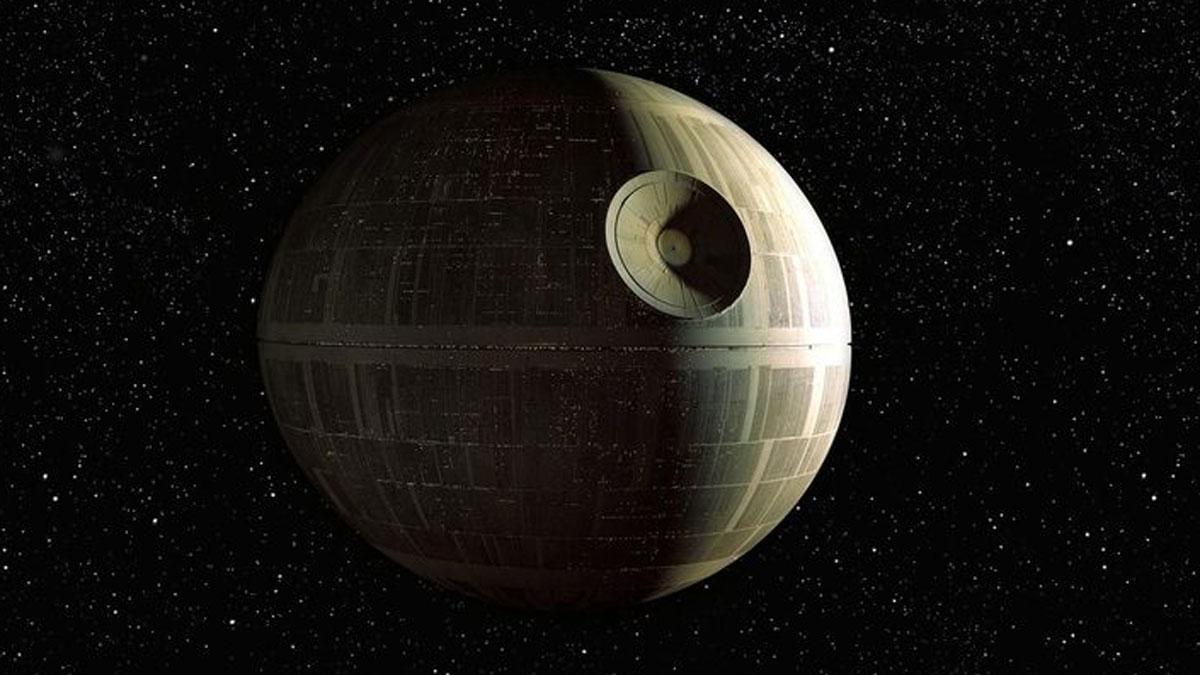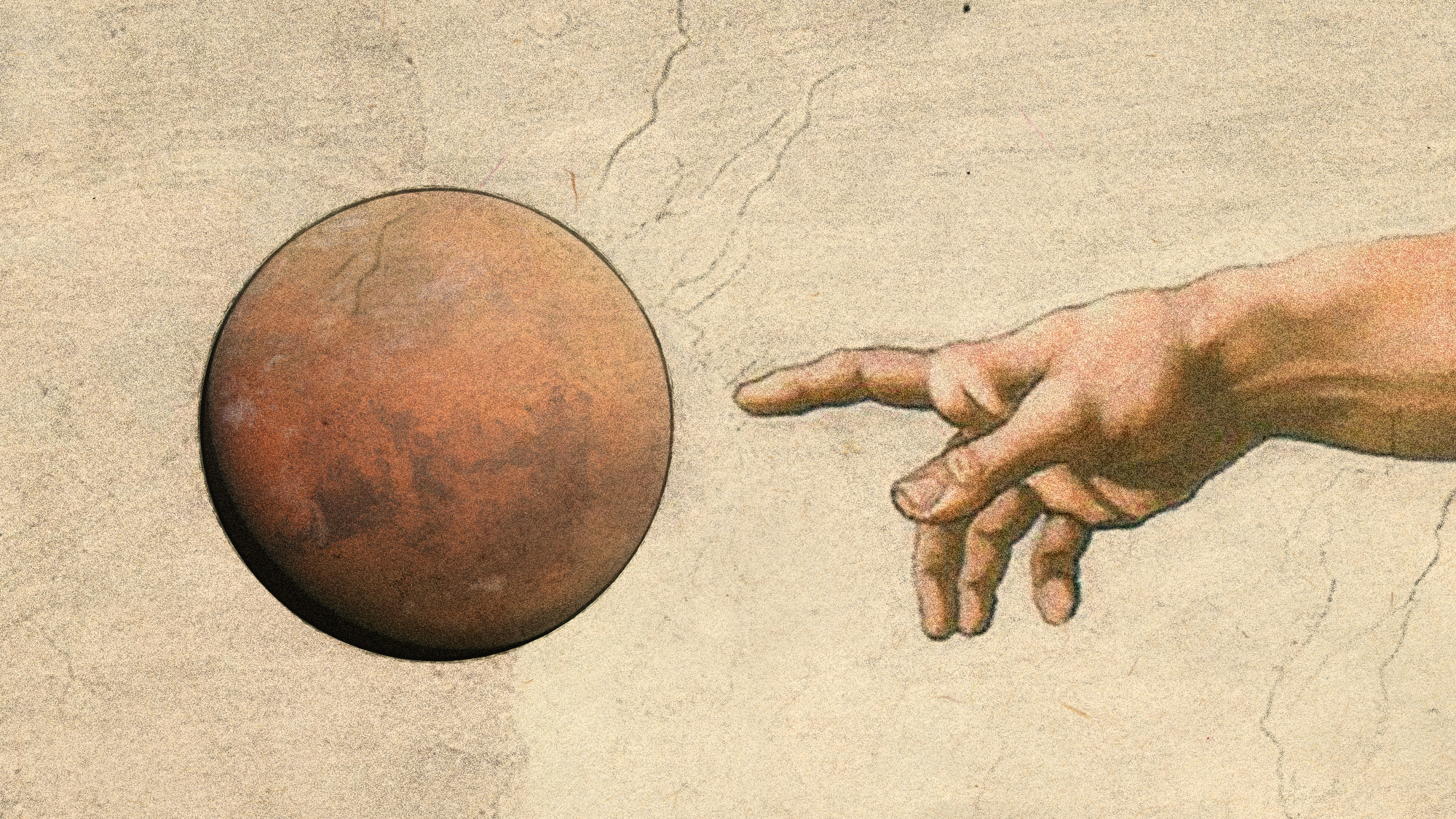'Real-life Death Star' can protect the Earth from asteroids
Laser-armed satellite could stop space rocks from crashing into planet, say scientists

A team at the University of California has devised a real-life version of the Death Star from Star Wars to protect the Earth from asteroids – and say the technology to make it already exists.
It's been named the 'De-Star', partly in homage to the film's space station. It stands for Directed Energy System for Targeting of Asteroids and exploRation.
The De-Star would be an unmanned satellite used to protect the Earth from potentially catastrophic collisions with asteroids. It would detect approaching space rocks that might pose a threat and target them with a high-energy laser beam.
The Week
Escape your echo chamber. Get the facts behind the news, plus analysis from multiple perspectives.

Sign up for The Week's Free Newsletters
From our morning news briefing to a weekly Good News Newsletter, get the best of The Week delivered directly to your inbox.
From our morning news briefing to a weekly Good News Newsletter, get the best of The Week delivered directly to your inbox.
The laser would heat one part of the rock, causing it to emit gas and alter the asteroid's direction – hopefully moving it away from the Earth.
It is an idea that has "been around for years", the Daily Telegraph says, but the exciting development is that the team from California believe that it could actually be built now – and would work.
The technology has been tested on Earth, with beams fired at pieces of basalt, which has a similar composition to some asteroids. They found that the basalt started to lose mass when it glowed white hot through a process known as sublimation, or vaporisation, which turns a solid or liquid into a gas.
The gas causes a "plume cloud", one of the team told the Telegraph, "which generates an opposite and equal reaction, or thrust".
A free daily email with the biggest news stories of the day – and the best features from TheWeek.com
Using the technique, the team managed to slow and reverse the rotation of a piece of spinning basalt.
However, there is a catch – deploying the De-Star successfully would need plenty of warning. It would take 30 years for a 10kW laser to deflect an asteroid measuring 328ft wide.
As well as not having Darth Vader on board, the De-Star differs from the Death Star in scale – it would be much, much smaller. The team are working on an even smaller version that would fly alongside asteroids as a last line of defence.
-
 Trump vs. states: Who gets to regulate AI?
Trump vs. states: Who gets to regulate AI?Feature Trump launched a task force to challenge state laws on artificial intelligence, but regulation of the technology is under unclear jurisdiction
-
 Decking the halls
Decking the hallsFeature Americans’ love of holiday decorations has turned Christmas from a humble affair to a sparkly spectacle.
-
 Whiskey tariffs cause major problems for American distillers
Whiskey tariffs cause major problems for American distillersIn the Spotlight Jim Beam is the latest brand to feel the pain
-
 Blue Origin launches Mars probes in NASA debut
Blue Origin launches Mars probes in NASA debutSpeed Read The New Glenn rocket is carrying small twin spacecraft toward Mars as part of NASA’s Escapade mission
-
 ‘The Big Crunch’: why science is divided over the future of the universe
‘The Big Crunch’: why science is divided over the future of the universeThe Explainer New study upends the prevailing theory about dark matter and says it is weakening
-
 The moon is rusting
The moon is rustingUnder the radar The Earth is likely to blame
-
 Panspermia: the theory that life was sent to Earth by aliens
Panspermia: the theory that life was sent to Earth by aliensUnder The Radar New findings have resurfaced an old, controversial idea
-
 Africa could become the next frontier for space programs
Africa could become the next frontier for space programsThe Explainer China and the US are both working on space applications for Africa
-
 Hurricanes are not exclusive to Earth. They can happen in space.
Hurricanes are not exclusive to Earth. They can happen in space.Under the radar These storms may cause navigational problems
-
 Answers to how life on Earth began could be stuck on Mars
Answers to how life on Earth began could be stuck on MarsUnder the Radar Donald Trump plans to scrap Nasa's Mars Sample Return mission – stranding test tubes on the Red Planet and ceding potentially valuable information to China
-
 The treasure trove of platinum on the moon
The treasure trove of platinum on the moonUnder the radar This kind of bounty could lead to commercial exploitation